Noticiasarquelogicasjaponesas - Arqueólogo Y Japonólogo En Proceso.










More Posts from Noticiasarquelogicasjaponesas and Others





Sean bienvenidos japonistasarqueologos a una nueva entrega, en esta ocasión nos vamos al fondo marino para ver unas de las mayores ruinas arqueológicas que están generando en la comunidad científica muchas controversias desde que fueron descubiertas en 1985. Dicha estructura se encuentra en Okinawa la cual está compuesta por las islas Ryukyu. - Las ruinas tienen unos 10.000 años de antigüedad ¿Hay dos teorías?La primera que dicen los científicos es: que es natural.La segunda es que es artificial.Yo he visto, todo el material registrado hasta el momento en fotos y vídeos para ser sinceros no me parece para nada natural hay puntos en lo que claramente que están trabajados por la mano del hombre. Sí nos imaginamos el montículo fuera de la superficie lo más probable es que se pareciera en su forma natural a una elevación en el terreno y lo más probable es que estuviera en su estado más virgen.-También hay que destacar que el nivel del mal sobre esas fechas era 120 veces más bajo que el actual, por lo que no sería raro que los moradores lo usaran como un lugar sagrado. Ya que para los japoneses el trabajo en roca no es nada nuevo y sobre todo construcciones colosales hechas en piedra como veremos en próximas publicaciones. - Espero que os haya gustado y espero vuestras opiniones y debates sobre el tema que nunca nos va a dejar de sorprender os deseo un feliz dia y una buena semana. - 日本の考古学者は新作を歓迎します。今回は海底に行き、1985年に発見されて以来、科学界で多くの論争を引き起こしている最大の考古学的遺跡の1つを見に行きます。琉球諸島。-遺跡は約1万年前のものですが、2つの説がありますか?科学者が最初に言うことは、それは自然なことだということです。二つ目は、それが人工的であるということです。これまでに写真やビデオに記録されたすべての資料は、正直なところ、私にはまったく自然に見えません。それらが人間の手によって明確に処理されている点があります。地表の外側のマウンドを想像すると、それは自然な形で地面の隆起に似ている可能性が高く、最も手付かずの状態である可能性が最も高いです。-また、当時の悪のレベルは現在の120分の1であったため、住民が聖地として利用することも珍しくありません。日本のロック作品は目新しいものではなく、特に将来の出版物で見られるように石で作られた巨大な構造です。-皆様のご愛顧を賜りますよう、よろしくお願い申し上げます。今後とも変わらぬご意見・ご感想をお待ちしております。 - Welcome japonistaarqueologos to a new installment, this time we go to the seabed to see one of the largest archaeological ruins that are generating many controversies in the scientific community since they were discovered in 1985. This structure is located in Okinawa, which is made up of the Ryukyu Islands. - The ruins are about 10,000 years old. Are there two theories? The first one that scientists say is: that it is natural. The second is that it is artificial. I have seen all the material recorded so far in photos and videos, to be honest, it does not seem natural at all to me. There are points that are clearly worked by the hand of man. If we imagine the mound off the surface, it most likely resembled in its natural form a rise in the ground and most likely it was in its most virgin state. - It should also be noted that the level of evil at that time was 120 times lower than today, so it would not be unusual for the inhabitants to use it as a sacred place. Since for the Japanese, rock work is nothing new and especially colossal constructions made of stone as we will see in future publications. - I hope you liked it and I look forward to your opinions and debates on the subject that will never cease to surprise us. I wish you a happy day and a good week.

Sean bienvenidos, japonistasarqueologos, a una nueva entrega en esta ocasión comentaremos de por qué en Japón se come poca carne, una vez dicho esto pónganse cómodos que empezamos. - Seguramente todos pensemos, que en Japón se come carne y no otro tipo de alimentos, ya que eso sería un estereotipo alimenticio. Para empezar el tema hay que entender que la geografía juega un papel muy importante en todo esto porque hay pocos focos donde los japoneses puedan tener el ganado, por el hecho de que su país es muy accidentado geográficamente hablando, el 90% de la carne es importada como otros muchos productos porque Japón escasean muchos de ellos. - En su territorio crían pollos y la Wagyu que es la más conocida y más cara del mundo, además, Japón es el segundo mayor importador de carne de cerdo del mundo, llegando a importar unas 923.835 toneladas de carne en 2020. Por eso comer carne en Japón es muy cara, hay platos con carne, pero no os creáis que hay muchos, al contrario de los que hay más son de: pescado, arroz, verduras, es decir los brotes de soja, el arroz les sale más barato por poner algunos ejemplos y los lácteos es otro de los productos que son muy caros. Su dieta es una de las más sanas del mundo y eso se ve en su población la más longeva del mundo, llegando a los 100 años, aparte de un gran equilibrio alimenticio, aplicado a una buena filosofía. - En esta publicación no he hablado de la influencia Yankee en Japón, pero qué país no tiene su influencia de su asquerosa comida chatarra, normal que sean el país con más problemas de obesidad del mundo. Espero que os haya gustado y nos vemos en próximas publicaciones que pasen una buena semana. - ジャポニスタ・サルケオロゴスの皆さん、ようこそ!今回は、なぜ日本では肉をあまり食べないのかについてコメントします。 - 日本では肉を食べ、他の種類の食べ物は食べない。というのも、日本の国土は地理的に非常に起伏に富んでいるため、日本人が家畜を飼うことができる場所はほとんどない。 - さらに、日本は世界第2位の豚肉輸入国であり、2020年には約92万3,835トンの肉を輸入する。そのため、日本で肉を食べるのは非常に高価である。肉を使った料理はあるが、その数はそれほど多くない。彼らの食生活は世界で最も健康的なもののひとつであり、そのことは、優れた哲学に基づいた栄養バランスの良さとは別に、世界で最も長寿で100歳に達する彼らの人口にも表れている。 - 本書では、日本におけるヤンキーの影響については触れなかったが、ジャンクフードの影響を受けていない国があるだろうか?それでは、また次の記事でお会いしましょう。 - Welcome, japonistasarqueologos, to a new installment in this occasion we will comment on why in Japan they eat little meat, having said that, make yourselves comfortable and let's get started. - Surely we all think that in Japan they eat meat and not other types of food, since that would be a food stereotype. To begin the subject we must understand that geography plays a very important role in all this because there are few places where the Japanese can keep livestock, due to the fact that their country is very rugged geographically speaking, 90% of the meat is imported like many other products because Japan has a shortage of many of them. - On its territory they raise chickens and Wagyu which is the best known and most expensive in the world, in addition, Japan is the second largest importer of pork in the world, importing some 923,835 tonnes of meat in 2020. That is why eating meat in Japan is very expensive, there are dishes with meat, but do not think that there are many, on the contrary there are more: fish, rice, vegetables, i.e. bean sprouts, rice is cheaper to give some examples and dairy products is another of the products that are very expensive. Their diet is one of the healthiest in the world and this can be seen in their population, the longest in the world, reaching 100 years of age, apart from a great nutritional balance, applied to a good philosophy. - In this publication I have not talked about the Yankee influence in Japan, but what country does not have its influence of its disgusting junk food, it is normal that they are the country with more obesity problems in the world. I hope you liked it and see you in the next posts have a nice week.





Sean bienvenidos a un especial, en el cual vamos a celebrar que ya somos 2100 seguidores.Y para hacerlo en esta ocasión, os traigo un pequeño resumen de la aldea Ainokura. Se localiza en la prefectura de Toyama en la isla de Honshu en la ciudad de Nanto.Se le concedió el patrimonio de la Humanidad por la Unesco en 1995 ¿Conocían la aldea?¿les gustaría visitarla? dicho esto muchas gracias por el apoyo y nos vemos en próximas publicaciones un cordial saludo. - すでに2,100人のフォロワーがいることを祝うスペシャルへようこそ。今回は、相倉村の概要をご紹介します。 南砺市本州の富山県にあり、1995年にユネスコ世界遺産に登録されました。村をご存知ですか? とはいえ、今後ともよろしくお願い申し上げます。今後ともよろしくお願い申し上げます。 - Welcome to a special, in which we are going to celebrate that we are already 2,100 followers, and to do so this time, I bring you a short summary of Ainokura village. It is located in Toyama prefecture on the island of Honshu in the city of Nanto. It was awarded a UNESCO World Heritage Site in 1995. Did you know the village? Would you like to visit it? Having said this, thank you very much for your support and see you in future publications with a cordial greeting.
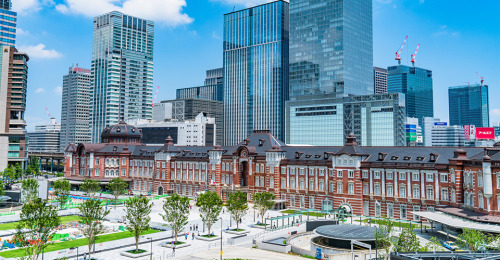
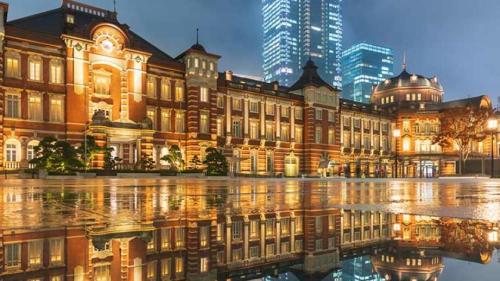
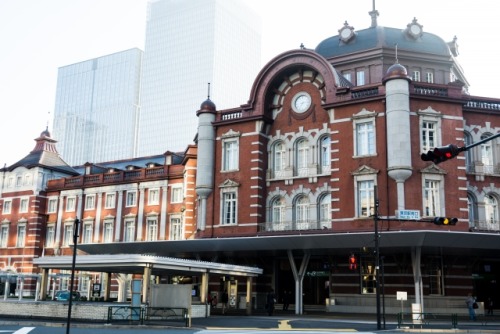
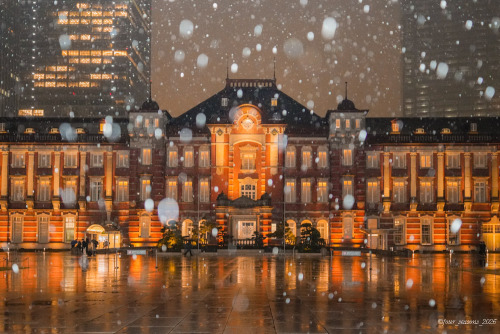
Sean bienvenidos japonistasarqueológicos, a una nueva entrega en la cual hablaremos de la famosa estación de Tokyo, uno de los pocos edificios que ha sobrevivido al paso del tiempo, ya que tras la operación doolittle y el gran terremoto de Tokio de 1923, Tokio ha sido muy remodelada, dicho esto pónganse cómodos que empezamos. - En 1908, comenzó su construcción en lo que respecta a la estación central, en 1914 empezó a funcionar, en la era Taisho 1915 Se inauguró el hotel de la estación de Tokio. En el año 1923 tiene lugar el Gran Terremoto de Kanto y el edificio de la estación no está particularmente dañado, se pudo reparar, pero la ciudad de Tokyo fue remodelada por completo y en 2007 realizaron trabajos de restauración, terminado en 2012. Hay que recordar que ha sufrido muchas restauraciones, ya que la de 1945 fue la más letal de todas. - Espero que os haya gustado y nos vemos en próximas publicaciones ¿Conocían este edificio y su historia? Que pasen una buena semana. - 今回は、有名な東京駅についてお話します。ドゥーリトル作戦や1923年の東京大震災の後、東京は大きく改造されましたが、その中でも数少ない時代の流れに耐えた建物の一つです。 - 1908年、中央駅の建設が始まり、1914年に開業、大正時代の1915年には東京ステーションホテルがオープンしました。1923年に関東大震災が起こり、駅舎は特に被害はなく、修復されましたが、東京の街は完全に改造され、2007年に修復工事が行われ、2012年に完成しました。1945年の震災が最も致命的であったため、何度も修復が行われたことを忘れてはならない。 - この建物とその歴史を知っていましたか?それでは、今週もよろしくお願いします。 - Welcome to a new installment in which we will talk about the famous Tokyo Station, one of the few buildings that has survived the passage of time, since after operation doolittle and the great Tokyo earthquake of 1923, Tokyo has been greatly remodelled, that said, make yourselves comfortable and let's get started. - In 1908, construction began on the Central Station, which became operational in 1914, and in the Taisho era 1915, the Tokyo Station Hotel was opened. In 1923 the Great Kanto Earthquake took place and the station building was not particularly damaged, it was repaired, but the city of Tokyo was completely remodelled and in 2007 restoration work was carried out, completed in 2012. It should be remembered that it has undergone many restorations, as the one in 1945 was the most lethal of them all. - I hope you liked it and see you in future posts. Did you know this building and its history? Have a nice week.
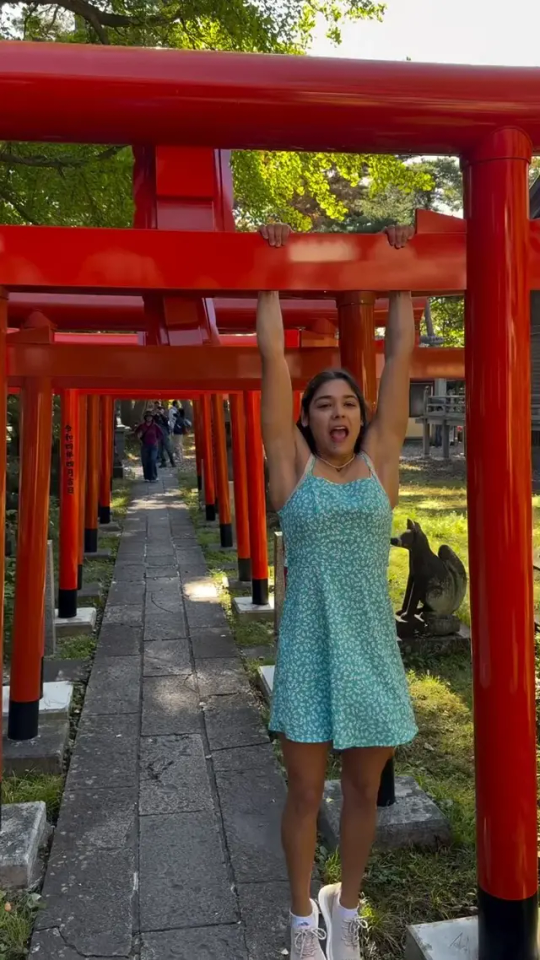



Sean bienvenidos amantes del mundo japonés, a una nueva publicación de actualidad. Dicho esto póngase cómodos que empezamos.
En esta ocasión, vuelvo otra vez a traer malas noticias sobre el país del sol naciente. Veo que la gente es muy burra y muy payasa por intentar ganar unos asquerosos likes de migrantes, comentarios, entre otras cosas, a través de la red social y dárselas de importante, de decir:Mira dónde he estado, mira lo que he hecho, solo con tal de llevar la atención y hacer el ridículo. Este tipo de gentuza no les importa, no les interesa la historia ni la cultura ni nada en absoluto, nada que tenga que ver con alguno de estos puntos mencionados anteriormente o algo similar; solo van a estos países, sobre todo al país desconocido o a países circundantes, porque están de moda y porque está en la sensación máxima ir para quedar bien y decir ante tus amigos o conocidos, Mirad dónde he ido y tú no. Por culpa de gentuza y de peña así, determinadas áreas del país del sol naciente están siendo vetadas para los turistas. Esto no quiere decir que los japoneses odien a los extranjeros y menos a los turistas; lo que odian son determinadas acciones o actitudes de dichos turistas, como subirse, por ejemplo, a la estatua de un perro icónico llamado Hachiko en frente de a estación de Shibuya.
-
O por ejemplo como el caso de la chilena inculta e inmadura por hacer el postureo en un lugar sagrado para los japoneses para mí es una calumnia y una blasfemia lo que ha hecho la chilena y además para mí es un insulto lo que los turistas están llegando a hacer en Japón convirtiéndolo en un parque de atracciones por favor parad ya de hacer el gilipollas o el imbécil en un país dejad que vaya gente que realmente valore y aprecie cultura, valores costumbres de un país. Temo postear esto en 2025; la raza humana da vergüenza.
-
Espero que os haya gustado y nos vemos en próximas publicaciones. Que pasen una buena semana.
-
日本世界を愛する皆さん、最新刊へようこそ。そうは言っても、安心して始めましょう。
-
この機会に、私は日出ずる国についての悪い知らせを伝えるために再び戻ってきました。ソーシャルネットワークを通じて、とりわけ移民から嫌な「いいね」やコメントを獲得しようとして、偉そうなふりをして、「私がどこにいたのか、私がどうなったのか見てください」と言う人々は、非常に愚かで非常にピエロであることがわかります。注目を集めて自分を馬鹿にするためだけにやったのです。このタイプの人々は、歴史や文化などにはまったく興味がなく、上で述べた点や同様のものとは何の関係もありません。彼らがこれらの国、特に未知の国や周辺国に行くのは、ファッショナブルだからであり、見栄えを良くして友人や知人に「ほら、私はどこに行ったのに、あなたはどこに行ったの?」と言うのが究極の感覚だからです。 t.このような暴徒や集団のせいで、日出ずる国の特定の地域は観光客の立ち入りが禁止されています。これは、日本人が外国人を嫌い、さらには観光客を嫌っているという意味ではありません。彼らが嫌うのは、例えば渋谷駅前にあるハチ公と呼ばれる象徴的な犬の像に登るなど、観光客の特定の行動や態度だ。
-
あるいは、例えば、日本人の神聖な場所でポーズをとった無学で未熟なチリ人女性の事件のように、私にとってチリ人女性の行為は中傷であり冒涜であり、また私にとって観光客の行為は侮辱である。日本で何をするか、遊園地に変えるか、その国で嫌な奴や馬鹿みたいな行動はやめて、その国の文化、価値観、習慣を本当に大切にして感謝している人たちを去らせてください。 2025 年にこれを投稿するのは怖いです。人類は恥ずべき存在だ。
-
気に入っていただければ幸いです。今後の投稿でお会いしましょう。良い一週間をお過ごしください。
-
Welcome, lovers of the Japanese world, to a new publication of current events. Having said that, make yourself comfortable, we're starting.
-
On this occasion, I am back again with bad news about the country of the rising sun. I see that people are very stupid and very clownish trying to gain some disgusting likes from migrants, comments, among other things, through the social network and acting like they are important, saying: Look where I've been, look what I've done, just to attract attention and make a fool of themselves. These types of scum don't care, they are not interested in history or culture or anything at all, nothing that has to do with any of these points mentioned above or anything similar; they only go to these countries, especially to the unknown country or surrounding countries, because they are fashionable and because it is the ultimate feeling to go there to look good and say to your friends or acquaintances, Look where I've been and you haven't. Because of scum and people like that, certain areas of the country of the rising sun are being banned for tourists. This doesn't mean that the Japanese hate foreigners and even less tourists; what they hate are certain actions or attitudes of said tourists, such as climbing, for example, the statue of an iconic dog called Hachiko in front of Shibuya station.
-
Or for example, like the case of the uneducated and immature Chilean woman for posing in a sacred place for the Japanese. For me, what the Chilean woman has done is slander and blasphemy, and for me, what tourists are doing in Japan by turning it into an amusement park is an insult. Please stop being an idiot or an imbecile in a country. Let people who really value and appreciate the culture, values, and customs of a country go there. I'm afraid to post this in 2025; the human race is shameful.
-
I hope you liked it and I'll see you in future posts. Have a good week.

HISTORIA DE LA ARQUEOLOGÍA JAPONESA Y EL PENSAMIENTO CIENTÍFICO.
Capítulo 1: Sean bienvenidos, japonistasarqueológicos, a una nueva entrega de arqueología nipona, vista desde un punto de vista filosófico, una vez dicho esto pónganse cómodos qué empezamos. — Seguramente, todos nos hacemos las mismas preguntas cuando se nos pregunta determinados temas de historia y de arqueología. ¿Quiénes eran nuestros antepasados y por qué llegaron a este determinado lugar y no a x? ¿De qué medios disponían para lograr determinadas hazañas históricas? En nuestro caso nos centraremos en dos preguntas determinadas ¿Quiénes fueron los primeros pobladores del archipiélago japonés? Y de ver cómo dicha idea ha llegado a nuestros días sin una respuesta clara, ya que tanto arqueólogos, historiadores, antropólogos, entre otros, han intentado dar una posible respuesta a una de las mayores incógnitas de la historia de la arqueología japonesa. — ¿Cuándo surgió la arqueología japonesa propiamente dicha? La historia de Japón es un tanto complicada, debido a que la ciencia propiamente dicha no nace hasta finales del siglo XIX, para ser más exactos 12 de abril 1877 ¿Cuándo surgen las sociedades arqueológicas, antropológicas y el laboratorio de antropología en Tokio? Además, tuvieron mucha influencia de gente tanto de Europa como de Estados Unidos, ya que tenían una gran influencia para aquel momento y mencionaremos algunos y a uno de los arqueólogos más destacados del mundo japonés. — ¿Cuándo surgen las sociedades arqueológicas, antropológicas y el laboratorio de antropología en Tokio? Para responder a dicha pregunta: A partir de 1880,vino un proceso gradual de institucionalización a la arqueología, generando un nuevo marco académico y universitario: Dando lugar al nacimiento de la Sociedad Antropológica de Tōkyō 1884, se creó el Laboratorio de Antropología en la Universidad de Tōkyō 1888,la fundación de la Sociedad Arqueológica se fundó en Japón en 1895. — Espero que os haya gustado y nos vemos en próximas publicaciones que pasen una buena semana.
HISTORY OF JAPANESE ARCHEOLOGY AND SCIENTIFIC THOUGHT.
Chapter 1: Welcome, Japanesearchaeologicalists, to a new installment of Japanese archaeology, seen from a philosophical point of view. Having said that, get comfortable and let's begin. — Surely, we all ask ourselves the same questions when we are asked certain topics in history and archeology. Who were our ancestors and why did they arrive at this certain place and not x? What means did they have to achieve certain historical feats? In our case we will focus on two specific questions: Who were the first settlers of the Japanese archipelago? And to see how this idea has reached our days without a clear answer, since archaeologists, historians, anthropologists, among others, have tried to give a possible answer to one of the biggest unknowns in the history of Japanese archaeology. — When did Japanese archeology itself emerge? The history of Japan is somewhat complicated, because science itself was not born until the end of the 19th century, to be more exact April 12, 1877 When did the archaeological and anthropological societies and the anthropology laboratory emerge in Tokyo? In addition, they had a lot of influence from people from both Europe and the United States, since they had a great influence at that time and we will mention some of them and one of the most prominent archaeologists in the Japanese world. — When did the archaeological and anthropological societies and the anthropology laboratory emerge in Tokyo? To answer this question: Starting in 1880, a gradual process of institutionalization of archeology came, generating a new academic and university framework: Giving rise to the birth of the Tōkyō Anthropological Society 1884, the Anthropology Laboratory was created at the University from Tōkyō 1888, the foundation of the Archaeological Society was founded in Japan in 1895. — I hope you liked it and see you in future posts, have a good week.
日本の考古学と科学思想の歴史。
第1章: 日本の考古学者の皆さん、哲学的観点から見た新しい日本考古学へようこそ。 — 確かに、歴史や考古学の特定のトピックを尋ねられたとき、私たちは皆同じ質問をするでしょう。 私たちの祖先は誰でしたか、そしてなぜ彼らは x ではなくこの特定の場所に到着したのでしょうか? 彼らは特定の歴史的偉業を達成するためにどのような手段を必要としたのでしょうか? 私たちの場合は、2 つの具体的な質問に焦点を当てます。日本列島の最初の入植者は誰ですか? そして、考古学者、歴史家、人類学者などが、日本の考古学史上最大の未知の一つに可能な答えを与えようとして以来、この考えが明確な答えがないまま、どのようにして現代に至ったのかを見てみましょう。 — 日本の考古学自体はいつ頃から生まれたのでしょうか? 日本の歴史はやや複雑です。科学そのものが誕生したのは 19 世紀末、より正確には 1877 年 4 月 12 日です。考古学人類学協会と人類学研究所が東京に誕生したのはいつですか? さらに、彼らは当時大きな影響力を持っていたため、ヨーロッパとアメリカの両方の人々から多くの影響を受けていました。彼らの一部と日本の世界で最も著名な考古学者の一人についても言及します。 — 東京に考古人類学会や人類学研究室が誕生したのはいつですか? この質問に答えるには、1880 年から考古学の制度化が段階的に進み、新しい学問と大学の枠組みが生まれました。1884 年に東京人類学会が誕生し、1888 年に東京で人類学研究室が大学に設立されました。考古学協会の財団は 1895 年に日本で設立されました。 — 気に入っていただければ幸いです。今後の投稿でお会いしましょう。良い一週間をお過ごしください




Sean bienvenidos japonistasarqueologicos a una nueva entrega del país del sol naciente en la que os, hablaré del Santuario Arashihiban, una vez dicho esto pónganse cómodos que empezamos. - El santuario Arashihiban, se localiza en la prefectura de Miyagi al noreste de Japón, en la isla de Honshu. Aragshinkan ¿A qué dios está dedicado? Es un dios que está envuelto en muchos misterios, además, es adorado en las regiones de Tohoku y Kanto. Arashiben-jinja se localiza en la ciudad de Tagajo y se desconoce la fecha exacta de cuando se construyó, pero consta en los registros del año 1774. - ¿En qué consiste el Tsugarusoto Sangunshi? Se trata de un antiguo documento, que fue descubierto por Kihachiro Wada. Sin embargo, ahora se podría tratar de una falsificación, Arahabaki aparece más el nombre de una familia que gobernó la región de Tsugaru(correspondería a los terratenientes europeos en Japón se les conoce como daimyō, en hiragana みょう). Dejen en los comentarios vuestra opinión, para debatirlo. - Espero que os haya gustado y nos vemos en próximas publicaciones que pasen una linda semana. Welcome Japanese archaeologists to a new installment from the land of the rising sun in which I will talk about the Arashihiban Shrine, so once you have said that, make yourselves comfortable and let's get started. - Arashihiban Shrine is located in Miyagi Prefecture in northeastern Japan, on the island of Honshu. Aragshinkan Which god is it dedicated to? It is a god that is shrouded in mystery and is worshipped in the Tohoku and Kanto regions. Arashiben-jinja is located in the city of Tagajo and the exact date of its construction is unknown, but it is recorded as being built in 1774. - What is the Tsugarusoto Sangunshi? It is an ancient document, which was discovered by Kihachiro Wada. However, it could now be a forgery, Arahabaki appears more the name of a family that ruled the Tsugaru region (corresponding to European landowners in Japan are known as daimyō, in hiragana みょう). Leave in the comments your opinion, for discussion. - I hope you liked it and see you in future posts have a nice week.
日本の考古学者の皆さん、日出ずる国からの新しい回にようこそ!今回は嵐播神社についてお話しします。 - 嵐播神社は宮城県にある。荒神館 どの神様を祀っているのですか?謎に包まれた神で、東北地方と関東地方で信仰されている。荒祭神社は多賀城市にあり、正確な創建年代は不明だが、1774年に創建されたと記録されている。 - 津軽外三郡誌とは?和田喜八郎によって発見された古文書である。しかし、現在では偽書である可能性もあり、アラハバキはむしろ津軽地方を支配していた一族の名前に見える。議論のために、あなたの意見をコメントに残してください。 - それではまた、良い一週間をお過ごしください。
https://www.instagram.com/noticiasarquelogicasjaponesas?igsh=cHptNTJxdWZoNm83

Sean bienvenidos a una nueva publicación en la cual os voy a compartir mi cuenta de Instagram, en la cual comparto todo lo que hago aquí en Tumblr a modo de reel, también comparto en el mismo formato lo que hago de mi otro blog. Hago muchos directos, de Japón ya sea de historia, arqueología, cultura entre otros puntos espero que os guste y nos vemos en próximas publicaciones hasta la próxima.
-
新しい投稿へようこそ。ここでは私の Instagram アカウントを共有します。ここでは、私がここで行っているすべてのことをリールとして Tumblr で共有します。また、他のブログで行っていることも同じ形式で共有します。私は歴史、考古学、文化など、日本からたくさんのライブショーを行っています。気に入っていただければ幸いです。また次回までお会いしましょう。
-
Welcome to a new post in which I'm going to share my Instagram account, in which I share everything I do here on Tumblr as a reel, I also share in the same format what I do on my other blog. I do a lot of live broadcasts, from Japan, whether it's history, archaeology, culture, among other topics. I hope you like it and I'll see you in future posts until next time.


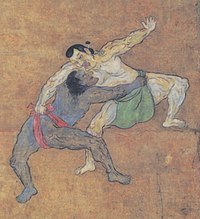
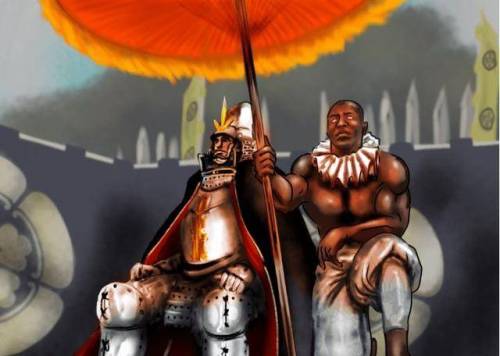
Sean bienvenidos japonistasarqueologos, a una nueva entrega de historia nipona una vez dicho esto pónganse cómodos que empezamos.
-
Hace no mucho salió un nuevo Assassin's Creed Shadows, Yazuke (やすけ) nacido posiblemente en mozambique aunque dependiendo de la fuente lo podéis encontrar que proviene de Madagascar o de otras partes de África no está muy claro su fecha de nacimiento, pero se sabe que existió en el siglo XVI fue un esclavo bajo el amparo de los jesuitas llegando a Japón y cuando Oda Nobunaga, lo vio se quedó impregnado de él mandó lavarlo porque nunca habían visto a un africano.
-
Cabe destacar que a Nobunaga le llamaban el loco, ya que le gustó a la opulencia de última hora en lo que respecta a la moda de la época básicamente lo tendría para fallar mira lo que tengo y tú no tienes. Aquí viene las disputas de sí no fue samurái, las fuentes niponas y la fuente en general de la época hablan de que le dio ciertos cargos posiblemente para llamar la atención y generar cierto revuelo no se sabe muy bien cuando murió.
-
Actualmente, en el país naciente esto está generando un gran revuelo. ¿Qué opinan al respecto?
-
日本の考古学者たちよ、ようこそ、日本史の新連載へ!さあ、くつろいで、始めよう。
-
少し前に、新しいアサシン クリード シャドウズ、ヤズケ(やすけ)おそらくモザンビークで生まれたが、ソースによっては、マダガスカルやアフリカの他の部分から来ているそれを見つけることができますが、彼の生年月日は非常に明確ではないが、それは 16 世紀に存在していたことが知られているイエズス会の保護の下で奴隷だった日本に来るし、織田信長、それを見たとき、彼と孕んでいた彼らはアフリカ人を見たことがないのでそれを洗浄するように命じた。
-
信長が狂人と呼ばれたのは特筆に値する。当時のファッションを見る限り、信長は後世の豪華さを好んでいた。日本側の資料や当時の一般的な資料には、信長が注目を集め、騒ぎを起こすために、信長にある地位を与えたと書かれているが、信長がいつ死んだのかは定かではない。
-
これは現在日本で大きな波紋を呼んでいるが、あなたはどう思うだろうか?
-
Welcome, Japanese archaeologists, to a new installment of Japanese history, so make yourselves comfortable and let's get started.
-
Not long ago came out a new Assassin's Creed Shadows, Yazuke (やすけ) born possibly in mozambique although depending on the source you can find it that comes from Madagascar or other parts of Africa is not very clear his date of birth, but it is known that existed in the sixteenth century was a slave under the protection of the Jesuits coming to Japan and when Oda Nobunaga, saw it was impregnated with him ordered to wash it because they had never seen an African.
-
It is worth noting that Nobunaga was called the madman, as he liked the latter-day opulence as far as the fashion of the time was concerned basically he would have it to fail look what I have and you don't have. Here comes the disputes of yes he was not a samurai, the Japanese sources and the general source of the time talk about him giving him certain positions possibly to draw attention and generate some commotion is not quite sure when he died.
-
This is currently causing quite a stir in Japan, what do you think about it?






sean bienvenidos japonistasarqueológicos, en este video que he encontrado en youtube, podemos ver el Kyudo ( きゅうどう) un tipo de arte marcial que se originó en Japón en el siglo XII, cuando Minamoto no Yoritomo estableció el shogunato de Kamakura, se estableció la moral samurái de alcanzar alturas espirituales a través del entrenamiento en tiro con arco y caballos. - Espero que os haya gustado y nos vemos en próximas publicaciones de Japón ¿ Lo conocían? - 考古学的な日本のファンを歓迎します。私が YouTube で見つけたこのビデオでは、源頼朝が鎌倉幕府を確立した 12 世紀に日本で生まれた武道の一種である弓道 (きゅうどう) を見ることができます。アーチェリーと馬のトレーニングを通じて精神的な高みに到達します。 - 気に入っていただけて、今後の日本の出版物でお会いできることを願っています。 - Welcome archeological Japanese fans, in this video that I found on YouTube, we can see Kyudo (きゅうどう) a type of martial art that originated in Japan in the 12th century, when Minamoto no Yoritomo established the Kamakura shogunate, morality was established samurai to reach spiritual heights through training in archery and horses. - I hope you liked it and see you in future Japan publications. Did you know him?
-
 enablesomething liked this · 3 months ago
enablesomething liked this · 3 months ago -
 autonomy1 liked this · 5 months ago
autonomy1 liked this · 5 months ago -
 momoyama7788 liked this · 7 months ago
momoyama7788 liked this · 7 months ago -
 vivencias-del-alma liked this · 8 months ago
vivencias-del-alma liked this · 8 months ago -
 34istanbyl liked this · 8 months ago
34istanbyl liked this · 8 months ago -
 2018full liked this · 8 months ago
2018full liked this · 8 months ago -
 max2050 liked this · 8 months ago
max2050 liked this · 8 months ago -
 01012180630 liked this · 9 months ago
01012180630 liked this · 9 months ago -
 naser1963 liked this · 9 months ago
naser1963 liked this · 9 months ago -
 dutchs-blog liked this · 9 months ago
dutchs-blog liked this · 9 months ago -
 noseysilverfox liked this · 9 months ago
noseysilverfox liked this · 9 months ago -
 j3337777 liked this · 9 months ago
j3337777 liked this · 9 months ago -
 110car8s liked this · 9 months ago
110car8s liked this · 9 months ago -
 misterio-m liked this · 9 months ago
misterio-m liked this · 9 months ago -
 dincolos-blog11 reblogged this · 9 months ago
dincolos-blog11 reblogged this · 9 months ago -
 gillesphotoarts liked this · 9 months ago
gillesphotoarts liked this · 9 months ago -
 rodolfo9999 liked this · 9 months ago
rodolfo9999 liked this · 9 months ago -
 asongpanda1 liked this · 9 months ago
asongpanda1 liked this · 9 months ago -
 gunduzmetin liked this · 9 months ago
gunduzmetin liked this · 9 months ago -
 rennane-renna liked this · 9 months ago
rennane-renna liked this · 9 months ago -
 sergioguymanproust liked this · 10 months ago
sergioguymanproust liked this · 10 months ago -
 margocooper liked this · 10 months ago
margocooper liked this · 10 months ago -
 junian5522 liked this · 10 months ago
junian5522 liked this · 10 months ago -
 u-nobu liked this · 10 months ago
u-nobu liked this · 10 months ago -
 ninomeira liked this · 10 months ago
ninomeira liked this · 10 months ago -
 takanaminato liked this · 10 months ago
takanaminato liked this · 10 months ago -
 repera23 liked this · 10 months ago
repera23 liked this · 10 months ago -
 adam-trademark liked this · 10 months ago
adam-trademark liked this · 10 months ago -
 rorydbe liked this · 10 months ago
rorydbe liked this · 10 months ago -
 dincolos-blog11 liked this · 10 months ago
dincolos-blog11 liked this · 10 months ago -
 emaadsidiki liked this · 10 months ago
emaadsidiki liked this · 10 months ago -
 dgfmaurizio liked this · 10 months ago
dgfmaurizio liked this · 10 months ago -
 bear-pattern-hamster liked this · 10 months ago
bear-pattern-hamster liked this · 10 months ago -
 hiromusicarts-blog liked this · 10 months ago
hiromusicarts-blog liked this · 10 months ago -
 noticiasarquelogicasjaponesas reblogged this · 10 months ago
noticiasarquelogicasjaponesas reblogged this · 10 months ago

238 posts